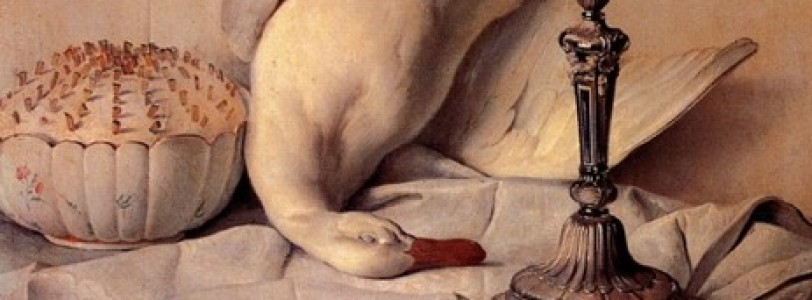Art Theft
Art theft is when someone, or a group of people, steal or use someone else's artwork without their permission. Art theft is not a modern phenomenon; many pieces of artwork have been stolen over the years, ranging from famous paintings by some of the great masters to digital art pieces being used without the artist's permission and being claimed as the thief's own work. Some of the stolen art costs thousands of pounds, while other's have very little monetary value.
Most countries recognise in law a person's right to protect their own work. "Copyright is a legal right created by the law of a country, that grants the creator of an original work exclusive rights to its use and distribution, usually for a limited time, with the intention of enabling the creator (e.g. the photographer of a photograph or the author of a book) to receive compensation for their intellectual effort." http://en.wikipedia.org/wiki/Copyright. Unfortunately, legislation such as this does not deter some people from stealing art and or claiming other people's work as their own.
Nowadays art galleries and private collectors take steps to prevent their art work from being stolen. Famous art pieces are often protected by high security because of their monetary value and the popularity of the artist who created the piece.Insurers will often insist that appropriate security is in place before they will insure a work of art.Nevertheless, despite security, audacious thieves will still try their luck.A well-known example of this is the 1911 theft of the famous painting 'The Mona Lisa', by Leonardo Da Vinci. Fortunately, this painting was later recovered.
There are a number of reasons why art is stolen. The main reason is financial gain for the thief. "Art theft is usually for the purpose of resale or for ransom. Stolen art is sometimes used by criminals as collateral to secure loans. http://en.wikipedia.org/wiki/Art_theft. Occasionally, the thieves will discover that the stolen artwork has such a high profile that it is impossible to sell on the open market. This art may disappear forever into the hands of unscrupulous private collectors or be destroyed. Sometimes wealthy collectors will commission thieves to steal to order. This artwork may disappear forever as it is not stolen for financial gain, but for a private collector's personal pleasure. Thousands of pieces of art were stolen by the Germans during WWII some of which is only surfacing now. Others may never be recovered.
"Only a small percentage of stolen art is recovered—estimates range from 5 to 10%. This means that little is known about the scope and characteristics of art theft." http://en.wikipedia.org/wiki/Art_theft
Painting and Other Types of Traditional Art
The picture above of "The White Duck" painted by Jean-Baptiste was stolen in 1990 from the Cholmondeley Collection at Houghton Hall. It still hasn't been recovered. The most expensive and largest art theft in the world was from the Isabella Stewart Gardner Museum in Boston on 18 March 1990 when thieves stole 13 pieces, collectively worth $300 million. A reward of $5,000,000 is still offered for information leading to their return.
Although theft of work from unknown artists in small galleries is not uncommon, these days it is very difficult to steal an expensive or famous painting from a major gallery because they are usually very well protected. The thieves would have to battle through high tech security even to get near the painting. There are often alarms and many cameras. Even if they have been able to "grab" the painting and make a quick getaway from the museum or gallery without the police breathing down their necks, the thieves would still have to hide the painting safely and then cover their tracks. This wouldn't be straightforward with an instantly recognisable painting by a famous artist like Monet or Picasso. Sometimes art thieves don't steal the whole canvas and the frames, they simply tear the canvas out of the frame thus making carrying and hiding the painting easier. Due to the fact that not many art thieves are actually caught and a large number of paintings are never recovered, little is known about how people successfully steal art professionally. However, it is a very different matter for digital art theft.
Digital Art Theft
Protecting digital art online is very difficult. Let's say a digital artist creates an original landscape on Photoshop and wants to show it to their friends, family or potential purchasers online. One way they can do this is to upload it on to a social networking site such as Facebook. They would not have their Facebook on Private which would limit the number of people viewing the work because they want a lot of people to see it to increase their chances of selling it. In order to protect the work from theft, the artist could add the following words to their post: "If you want to use this art you must credit me or email me about the use of my artwork for your own projects etc. This art work is not for free use."
However, these words would not prevent a stranger who has seen the landscape on Facebook from copying it onto his own site/documents and re-posting it as his own original creation. This is art theft because an exact copy has been made without the artist's permission and re-posted by the thief who has claimed it as an original work of his own; the original digital artist isn't credited or mentioned once. If this is discovered by the original artist, they could ask that the thief credits the original artist and corrects the 'error' or that the post is taken down. Sometimes the artist is lucky and this will happen.
In another scenario, a stranger is looking through the original digital artist's posts and really likes the landscape. If the stranger get the digital artist's permission to repost the landscape on a social networking site, (they promise to post the link to the original on Facebook and the link to the digital artist's profile page as well as credit them) so that their friends could see the amazing art work, this would not be art theft because the original artist has given his permission for the art to be reproduced and been credited and informed about the use of their art work on other websites.
Animation & Other – Characters
Many people draw well-known cartoon characters like Mickey Mouse or Spider Man for fun or to improve their drawing skills. It is very easy to copy another person's character and lots of fun. There is nothing wrong with this and it is not illegal. However, if you were to attempt to use a copy of Mickey Mouse, or something resembling this character for a new TV show, it is very likely that the Walt Disney Studios, the creators of Mickey Mouse, would sue you very quickly. Walt Disney Studios owns the rights to the Mickey Mouse character and they protect it carefully using all the means at their disposal.
This is in contrast to more traditional paintings because it is possible to do a piece in the "style of Picasso", but because it isn't identical to Picasso's works you wouldn't be sued by whoever owns the rights to the works of Picasso. You could do a watercolour based on one of Picasso's drawings, but because it is not identical you could not be sued successfully. However, if you tried to pass it off as an original Picasso that would be fraud, which is another issue all together.
However, in character design and animation it is a lot easier to cross over the line of what is possible legally because it is easy to create a character which looks similar to another. Also, there isn't the same freedom a with a wide range of mediums and inspiration as there is in traditional artwork.
Ways To Reduce Art Theft - Both Digital and Traditional
Little is known about the ways of stealing traditional art, although there are some movies based on it. To reduce this type of theft security should be increased in places with famous and expensive artwork. Artists and galleries can take photos of paintings for their records.Then galleries from which art has been stolen can widely advertise the stolen art so that people can recognise it and inform the police if they see it for sale. In the digital world, artists should remember to put a copyright notice on their work to remind people that it is not acceptable to copy and use it without the artist's permission. In animation and character design, any artist seeking 'inspiration' should remember that it is best to stay original when creating characters.







brilliant essay Catie, covers all the salient points and makes a very interesting read, well done for this in depth analysis